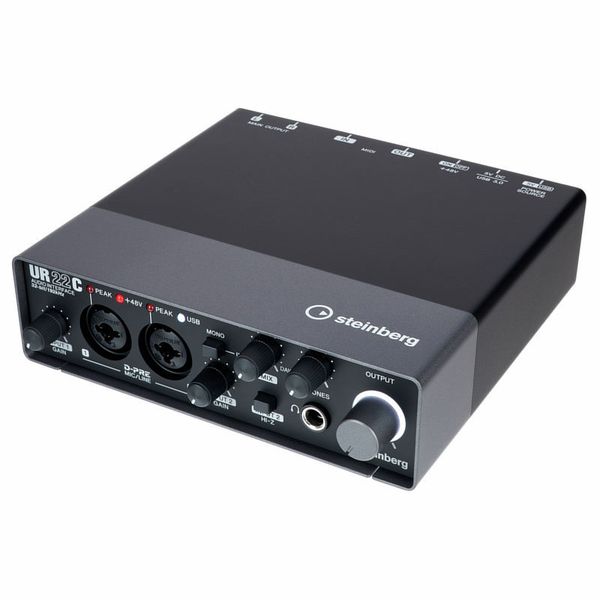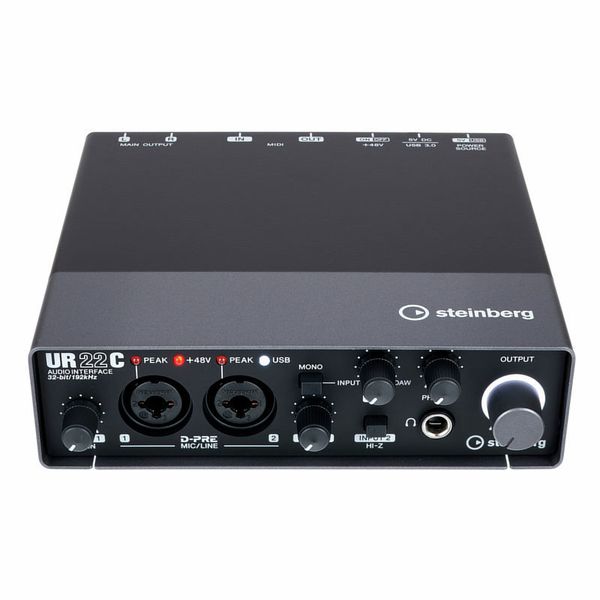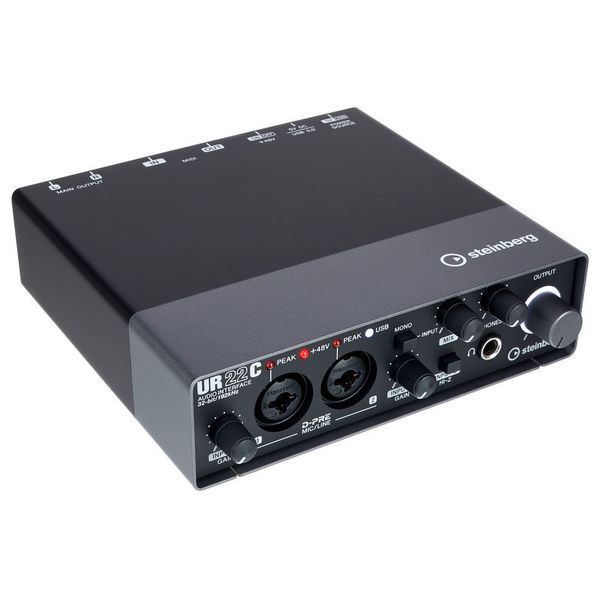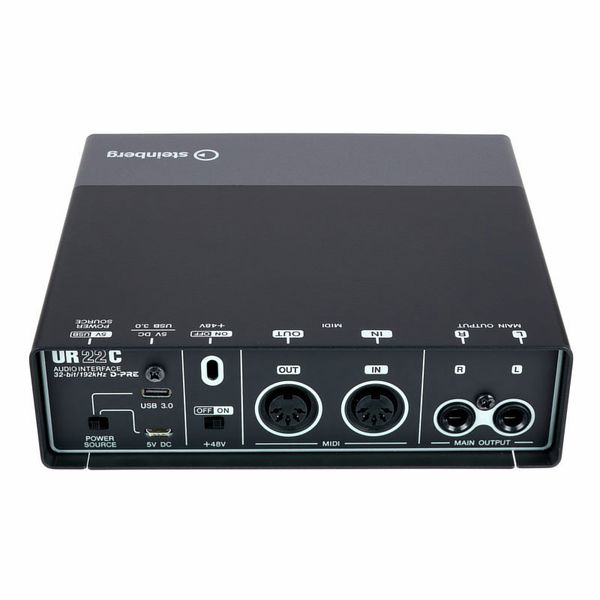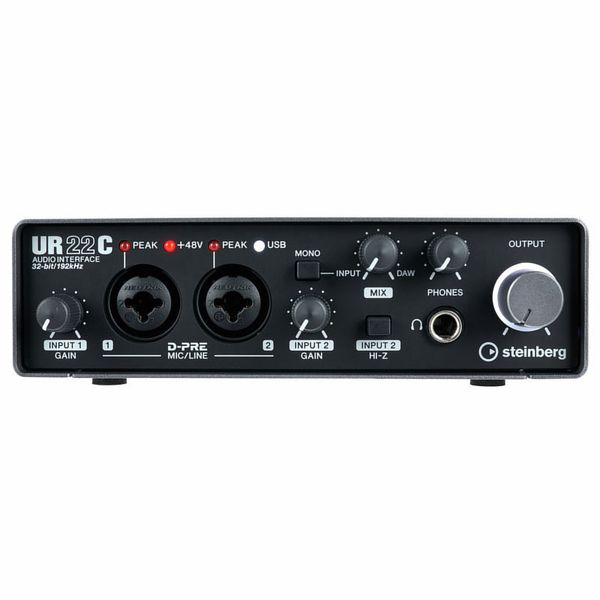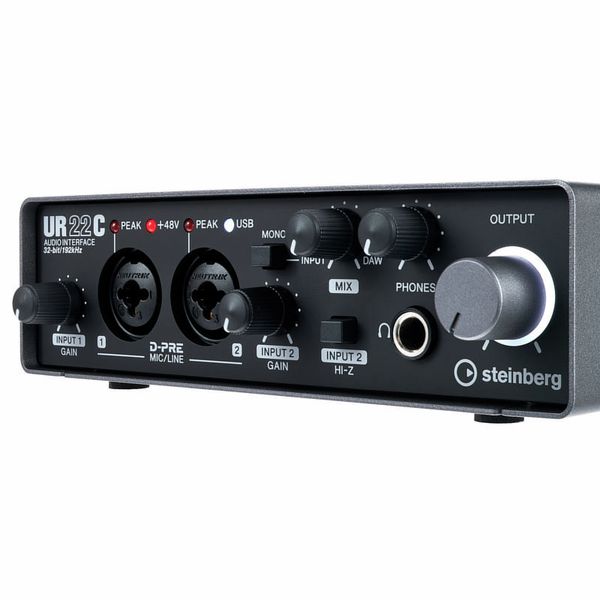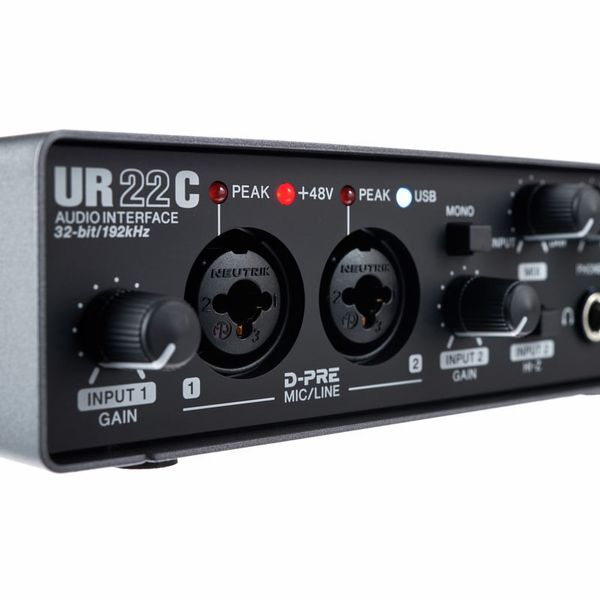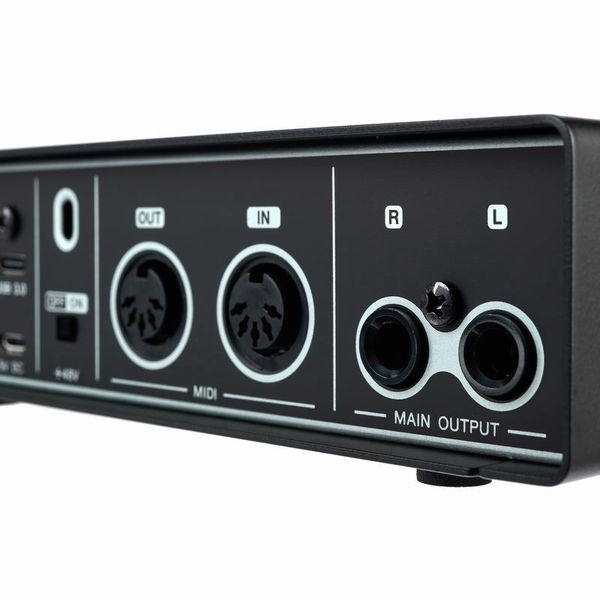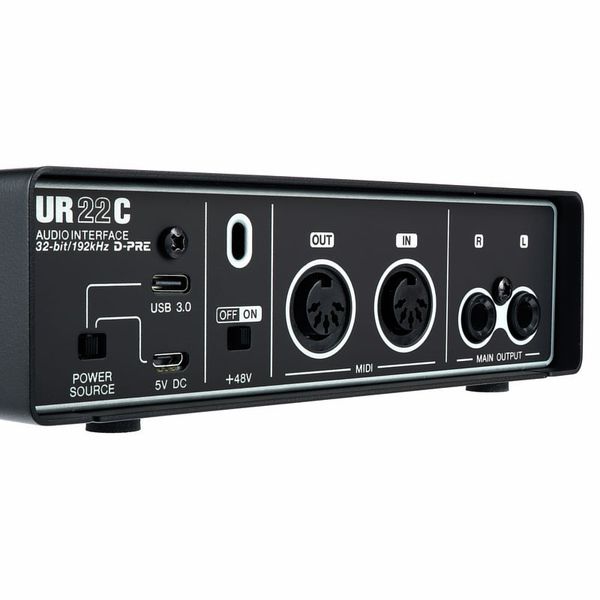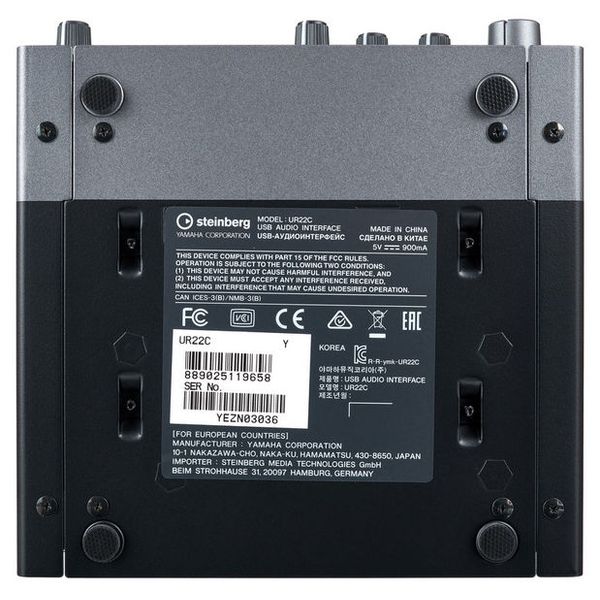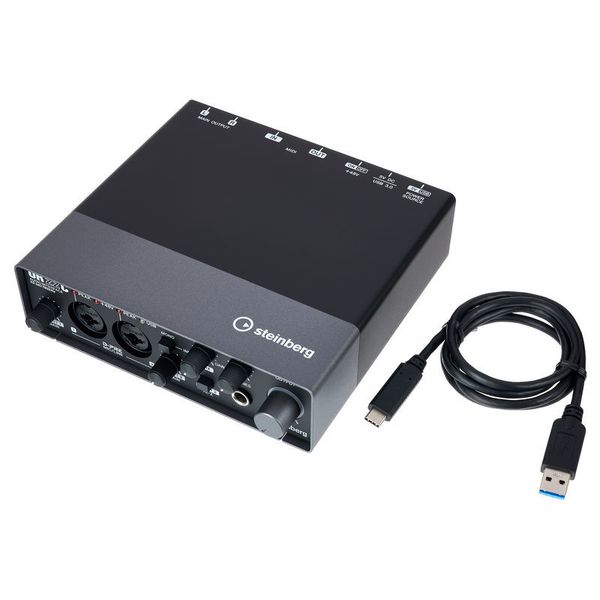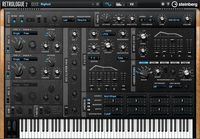It’s a solid purchase overall.
Use:
- I use it mostly to drive my HS5 Monitors, and to record vocals.
Pros:
- I like that I can use it without powering my Mac.
- I like the future proof USB-C connection on the back.
- Hardware DSP for Reverb (Rev-X), Compressor and Equalizer
Cons:
- I wasn’t pleased to find that there isn’t a power button on the back, but the switch between the 5V USB external power and the USB-C connection will indirectly act as a power switch, as I only use the USB-C connection.
- I don’t like the USB-c input connector. It has a very small depth, so when you connect the USB-c cable, it sticks out too much and as a result it wobbles a lot and doesn’t feel like a stable connection at all.
- I don’t like the inputs on the front. It doesn’t make sense, but most USB interfaces seem to think it’s a good idea. If you have this on a desk with your computer, you’ll have your cables over the desk. I would usually disconnect my cables from the instruments and not the interface. So, these interfaces will always have bad cable management.
- The D-PRE pre-amps seem to be the most noisy pre-amps you can get, out of the most popular interfaces out there. This is fact, not opinion. It’s an observable, verifiable fact. However, it probably won’t matter for 99% of people purchasing this. You’ll get noise at around -120 decibels, compared to -126/-127 from competing products like behringer and focusrite. So, like I said, it probably won’t matter anyway.
- I don’t like the disposition of the input gain knobs. One is on the left of the first input, and the other is on the right of the second input. But like I said, inputs should be on the back, in my opinion. The front is where the controls should be.
- At this price point, I would have liked to see a line input on the back
Some final notes:
- The Behringer UMC204HD would be my first choice considering the crazy price diference. I only picked this one because I wanted the hardware DSP that it provides.


